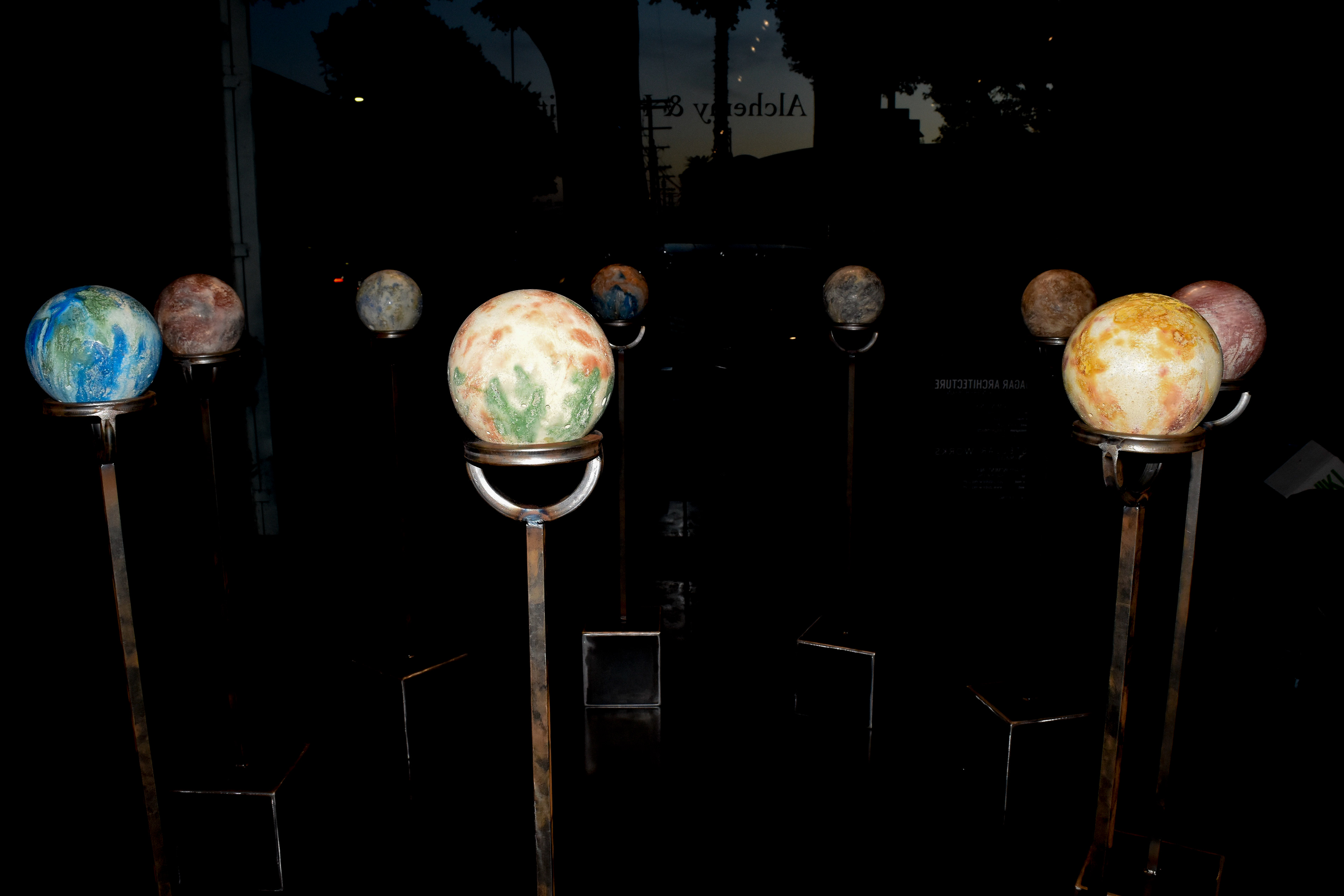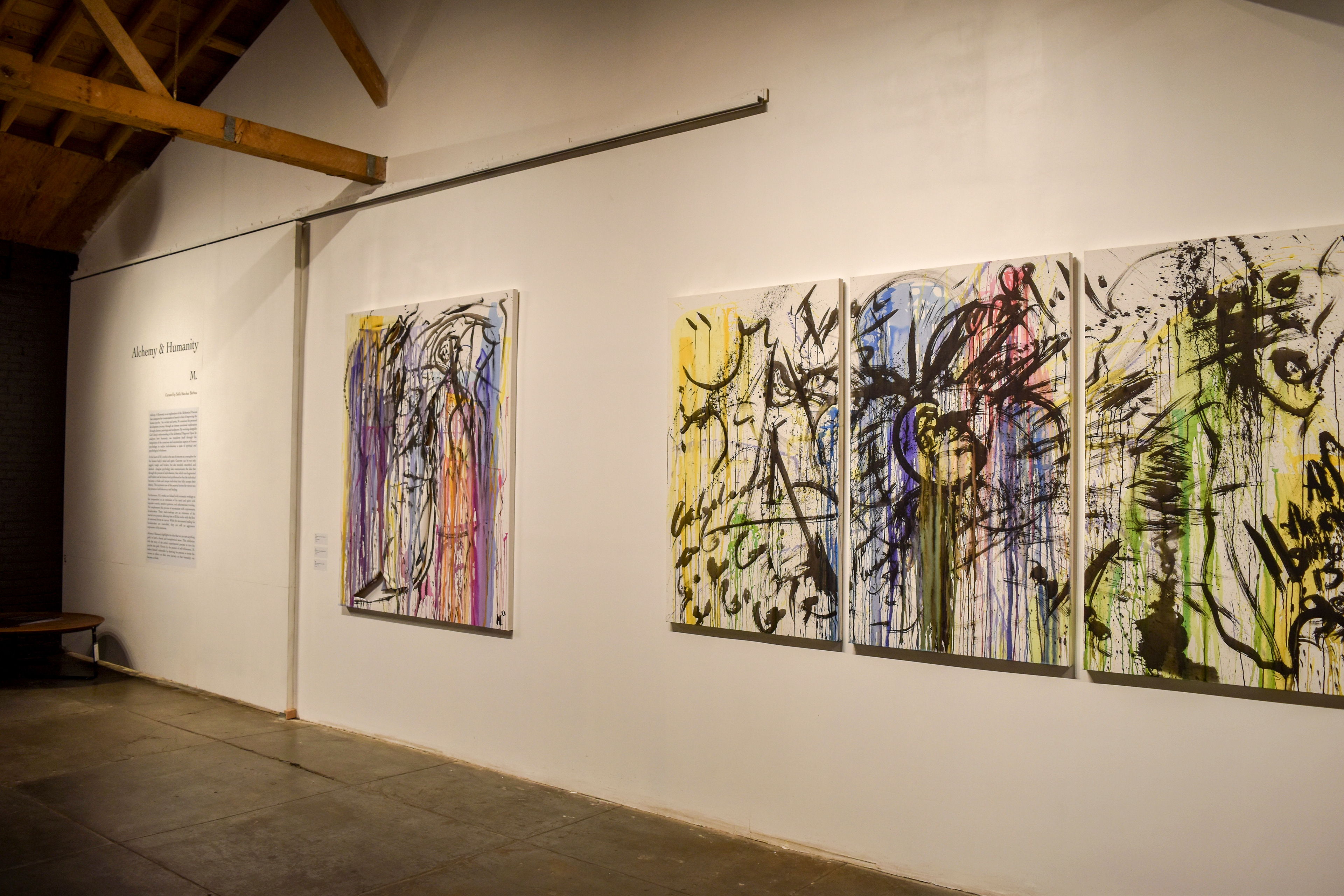Photo Credit: Alexandra Golden
Alchemy & Humanity is an exploration of the Alchemical Process that compares the transmutation of metal to that of improving the human psyche. As a writer and artist, M. examines his personal development journey through an intense emotional exploration through abstract paintings and sculptures. By working alongside Carl Jung’s understanding of the alchemical Magnum Opus, he analyzes how humanity can transform itself by integrating the conscious and unconscious aspects of human psychology to realize individuation, a state of spiritual and psychological wholeness. “We can turn lead, or anything for that matter, into gold.”
Since moving to Los Angeles and finishing his LLM, M. embarked on a soul-searching journey after the death of his mother. Marie was an artist with clinical depression who passed away from cancer. In many ways, she became the source of inspiration for the artist to reevaluate his life path and seek happiness. M. worked on strengthening his body, mind, and spirit through martial arts. Along the way, he gained interest in the ancient principles of Alchemy and how to apply them to self-improvement through Jung.
Jungian psychology follows psychic transformation through an archetypal and universal process of individuation. The process takes the principles of alchemy and applies them to individuation to integrate the conscious and the unconscious aspects through four stages. The stages are based on the alchemical transfiguration process of Nigredo, Albedo, Cintrintas, and Rubedo. Jung takes the phases as an analog for Confession, Elucidation, Education, and Transmutation.
In Alchemy, the Magnum Opus is the process of working the materia prima into the philosopher’s stone, a substance that can turn anything into gold. The four stages needed to accomplish this are: Nigredo, the blackening, Albedo, the whitening, Citrintas, the yellowing, and Rubedo, the final step of reddening. For Jung, Nigredo involved doing “shadow work,” awareness of the projection of the subject’s darkness unto others. Albedo is the next stage, a journey towards recognizing what makes the subject unique, creating a sense of purpose and meaning. Next, the subject must work on how they relate to themselves and others and how the others relate to them through Citrintas. This step is made to break patterns in relationship dynamics. Finally, the culminating stage is Rubedo, the merging of the ego to the self, where the subject becomes whole.
M.’s pieces reflect his process to face his soul, making his darkness conscious, finding purpose and meaning, understanding how he can relate to others breaking patterns through love. His works are divided into two: the understanding of the transfiguration process intellectually and his transfiguration leading to his personal development through a passionate confrontation of emotions. The first one is more rational and geometric, while the latter is more expressive and free-flowing. Sometimes, the two of them collide as the artist faces himself.
At the heart of M.’s works is the use of concrete as a metaphor for the human body’s mind, and spirit. Concrete can be not only jagged, rough, and broken but also mended, smoothed, and sleeked. At the same time, while concrete remains in movement, it can be altered. When it stops moving, it becomes hard and unflexible, much like humans, when they stop seeking improvement and stay in their comfort zone. Jungian psychology also communicates the idea that through individuation, that which was fragmented and broken can be restored and synthesized so that the individual becomes a whole and unique individual that fully accepts their destiny. The expressive use of this material invites the viewer to reflect on humanity’s ability to mold and improve itself.
Furthermore, M.’s works are infused with automatic writings to his composition as an extension of his mind and spirit with impulsive marks, intuitive gestures, and subconscious wording. He complements this process of automatism with expressionist brushstrokes. These mark-makings are an extension of his martial arts practice, allowing him to fill his works with the flow of emotional forces on canvas. While the movements leading his brushstrokes are controlled, they are still an aggressive expression of his emotions.
Alchemy & Humanity highlights the idea that we can turn anything gold, in both a literal and metaphorical sense. This exhibition tells the story of the artist’s experimental process to turn his psyche into gold. Driven by the pursuit of self-refinement, M. makes himself vulnerable by showing his process to invite the viewers to allow themselves to become vulnerable, face their inner demons and to inspire them to embark on their journey so that humanity can become a whole.

Photo Credit: Alexandra Golden
